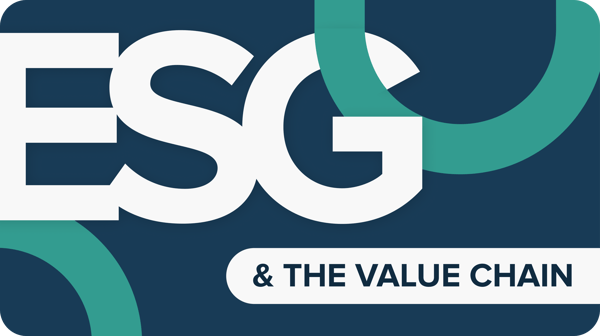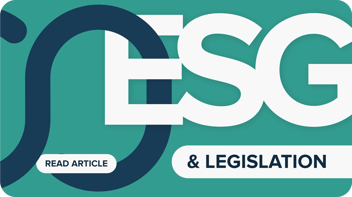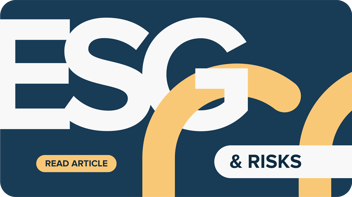ESG and the value chain - what are they and how are they crucially interconnected?
I'm sure you’ve noticed. These last couple of years, new Environmental, Social & Governance (ESG) regulations have been popping up left and right. And all of them have 1 thing in common: they include your value chain. In this first part of our blog series on ESG, let’s take a step back first and answer the most obvious questions on the ESG topic.

1. What is ESG?
ESG stands for Environmental, Social & Governance. ESG aims to point the company’s attention to non-financial focus areas, like air pollution, carbon emissions or the health of people making their products.
2. What is a Value Chain?
A company’s value chain is a chain of activities through which a company creates value. That’s quite abstract, so let me give an example. Imagine you’re a company that makes plastic toys. There’s a long chain of events between getting the raw materials to make your toys to someone actually buying and playing with the toy. This is usually split into 3 distinct stages: upstream, own operations, and downstream.
- Upstream: This is where you get the materials you need to produce your plastic toys. Your direct suppliers might deliver plastic pellets. But your suppliers’ suppliers are also part of your value chain. These plastic pellets are made from petroleum, which needs to be dug up. So every step, from digging up the oil to delivering them to your company as plastic pellets, is your upstream value chain (or supply chain).
- Own operations: This speaks for itself. These are the activities you have direct control over: designing and building the toys.
- Downstream: To sell your toys, you must transport them to stores, where customers can buy them. What people often don’t realise, is that the “use phase” and the “after-use phase” are also included in your company’s downstream value chain. This means customers playing with your toys and disposing of them in a (hopefully) responsible manner are equally part of your value chain. Your value chain does not end when the toy is sold to them by the store.
3. How are ESG topics connected to a company's value chain?
Well, your biggest ESG impacts and risks are almost always located in your value chain, and not in your own operations. Let’s have a look at some examples of each of these topics:
- Environmental: most carbon emissions, resource use, and pollution of any company happen in their value chain. That’s where the raw materials for production are mined, refined and produced. Traditionally the most impactful and risky phase in any chain of operations.
- Social: human rights, slavery, health and safety, paying a living wage, … are all topics that are usually well-organized in Western economies where your own operations are located. The risks of negative impacts on these social topics are mostly in your value chain in non-Western/low-cost environments. Either during the mining and production phase (upstream), or in the “after-use phase” (downstream).
- Governance: corruption, bribery, and payment practices to SMEs in the value chain, … are intrinsically linked to business partnerships, thus the value chain.
In summary, the value chain contains most of any company’s Environmental, Social & Governance impacts and risks. This emphasizes the importance of focusing on sustainability, due diligence, and responsible business practices in your value chains as an intrinsic element of your ESG strategy. In our next blog post, we will explore the embedding of the value chain in recent and upcoming ESG legislation in further detail.
Want to know all about ESG & Contract Management?
Watch Hans van Dam's expert session on Contract Management Day 2024 ⬇️




